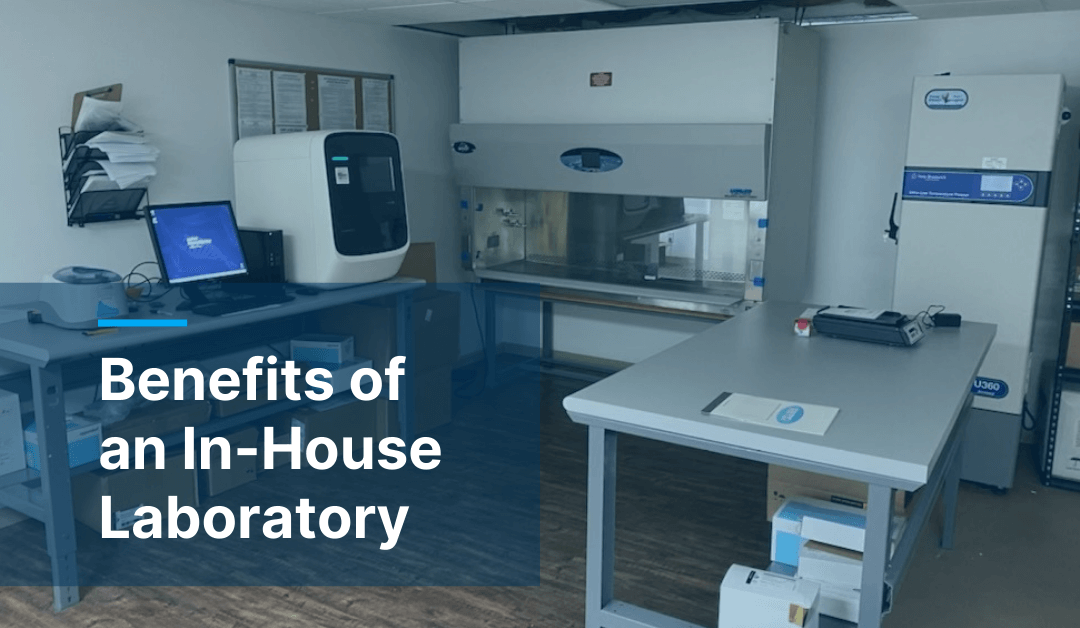Note: This article was updated in March of 2024 to ensure the information within is current and accurate.
As physician practices and community healthcare providers consistently seek to improve quality and provide better value to patients, one pathway that can achieve both outcomes is to move laboratory testing in-house. In addition to offering a better patient experience and test turnaround times, building an in-house lab also lets providers capture some of the revenue being lost when sending out samples to large reference labs.
Curious if moving your testing in-house may be the right move for your practice, but wondering where to begin? Here are three major benefits of building and operating your own in-house lab:
Provide better (and timelier) patient care
While there are certainly cost and quality improvements to be realized from building an in-house lab, the primary benefit for any physician office is that the decision improves patient care by granting physicians more control of their testing process while ensuring quality results and good turnaround times.

Jon Harol, President, LLS
In addition to not having to send the patient to a collection center to have their sample drawn, the ability to provide patients with their test results in a much more efficient manner expedites decisions surrounding their care, says Jon Harol, President of Lighthouse Lab Services.
Whereas many large national reference laboratories may take seven or eight days to process a sample, a physician with an in-house lab can often turn those results around the same day.
“It all comes back to being able to provide better care and offer a better experience to the patient,” Harol says.
An ancillary benefit to this approach is that it eliminates the confusion of a patient receiving a bill from a laboratory they may not be familiar with. When a patient receives a bill from a reference lab they’re not familiar with, it can sometimes create confusion and leave a bad taste in their mouth, and it often leads to unnecessary calls to the physician office that eats your staff’s time.
RELATED ARTICLES:
- How Much Does It Cost to Build a Clinical Laboratory?
- What Does It Cost to Build an In-House Pathology Lab?
“A lot of patients receive bills from labs they’ve never heard of before, and then the first time they hear from the lab is when they receive a bill,” points out Mark Roth, CEO of Lighthouse. “If you’re a provider with an in-house lab, you have the entire billing process under your umbrella which maximizes the patient experience.”
More customization and control
Bringing a laboratory in house allows the physician to customize the panels and targets according to what they’re looking for. That flexibility is key, as each physician typically approaches patient care differently.
However, physicians who outsource their testing are often at the mercy of their lab partner’s requisition form, which may sometimes target unnecessary pathogens or analytes.

Mark Roth, CEO, LLS
“When you bring it in house you can be more customized to what you’re looking for” Harol says. “And there’s less waste, you’re not ordering things you don’t need.”
Additionally, the ability to customize your test menu to the needs of your patient population may provide the opportunity to improve relationships between your office and various private payors.
“This gives you the chance to work with your payor and potentially negotiate beneficial rates not just for your office, but for the payor as well,” Roth says.
Improved costs
Although cost shouldn’t be the primary motivating factor when a physician is considering whether to build an in-house lab, there are several savings to be realized by doing so.
Many reference labs have considerable sales and marketing expenses, in addition to other ancillary expenses such as shipping and courier fees. Conversely, in-office labs can eliminate many of these costs and instead use the savings to improve their practice and provide better patient care.
“A lot of the revenue that is currently generated by lab testing is captured by large labs and Fortune 500 companies,” Harol says. “When the small local physician can bring some of that revenue back into their practice, that extra revenue stream makes sure they’re stable.”
How Lighthouse can help
If your practice is ready to discuss the next steps of building an in-house laboratory, you’ll want to have a partner with experience navigating the various regulatory bodies (CLIA, COLA, CAP, etc.) and existing state and federal guidelines. You will also need to make sure you have a qualified laboratory director to oversee testing, in addition to the other roles CLIA mandates.
Lighthouse assists in this process by acting as everything from a consultant to a hands-on partner in your laboratory build. Whether you require assistance with staffing, regulatory guidance, software solutions, or more, Lighthouse has the expertise to help minimize capital expenses while efficiently getting your in-house lab up and running.
Contact us today for a free consultation to learn more!

What an informative article! Thank you a lot.
You’re welcome, Paul! Glad you found the information to be useful. Let us know if you have any questions or suggestions for follow-up pieces!
Are your services available outside USA?
Hi Susan, we currently don’t offer our services to labs outside of the USA. However, we do have experience helping international clients build labs in the US and have served as consultants to groups seeking to enter the US market. Let us know if you have any other questions!
Definitely make financial sense. Are your services available in South Africa ?
Hi Victor, unfortunately, our services are not currently available outside of the United States and Canada. However, if you’re seeking an international consultant and would like a referral, we may be able to help if you’d like to reach out to us directly via email at info@lighthouselabservices.com. Please include some additional details about the type of lab you’re looking to start so we can get you pointed in the right direction!